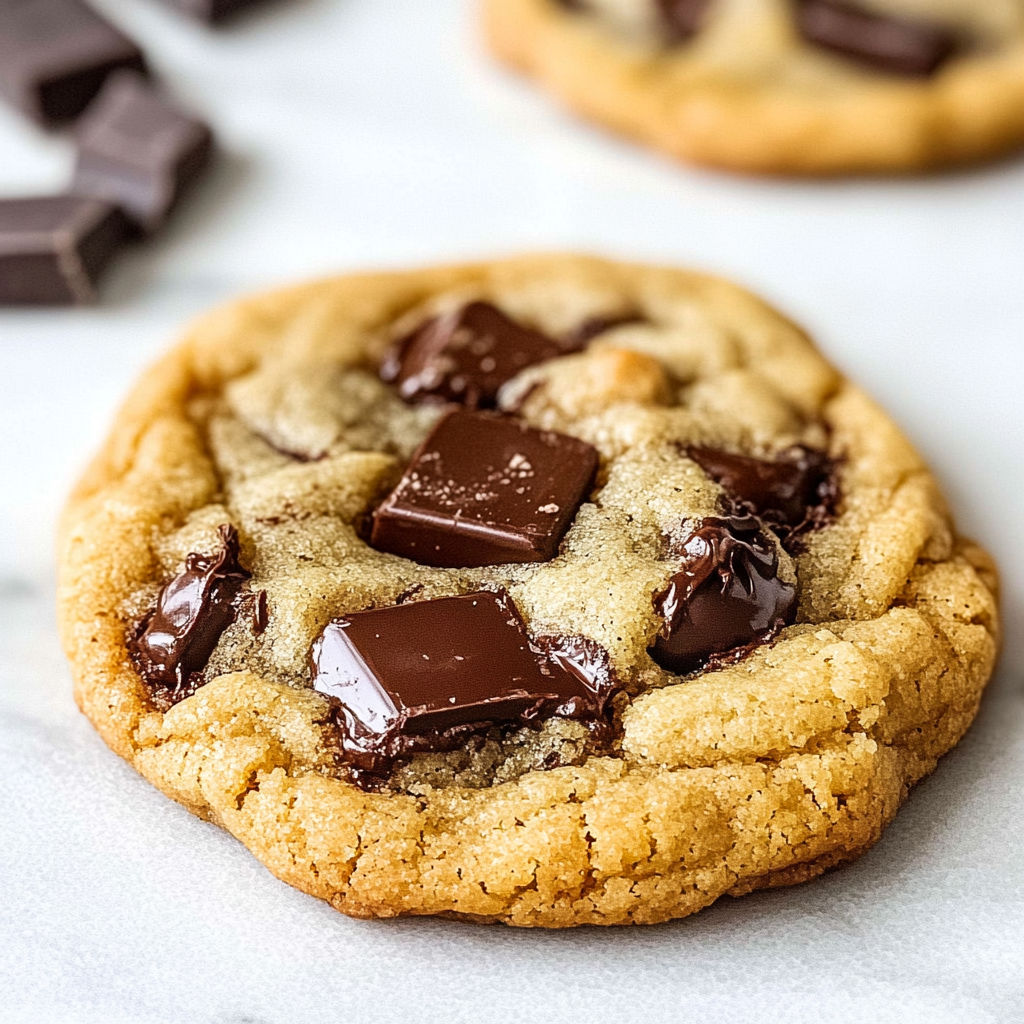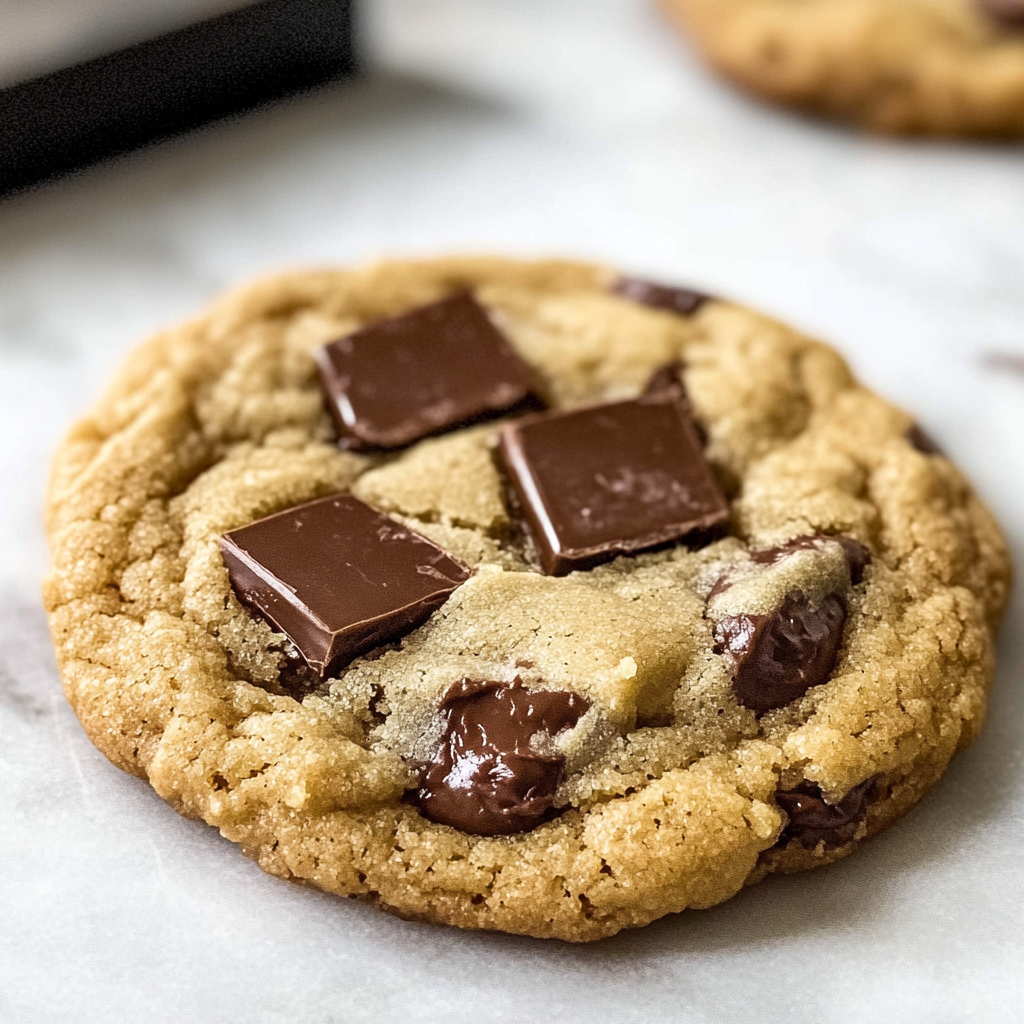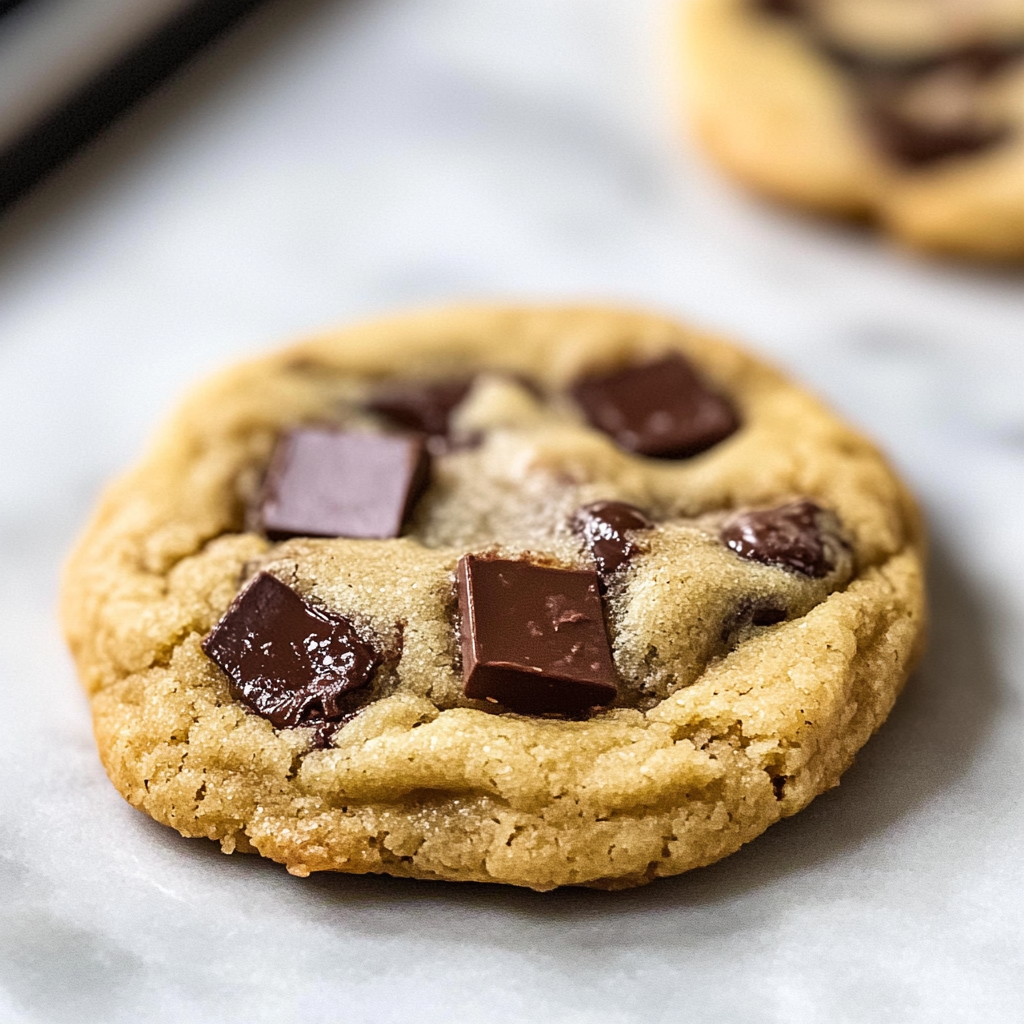What Is Better for Cookies: Light or Brown Sugar?
Introduction
When it comes to baking, sugar is a cornerstone ingredient that significantly impacts the final product’s taste, texture, and appearance. Whether you’re making cookies, cakes, or any other sweet treat, choosing the right type of sugar can make a big difference. In the world of cookies, the debate often centers around whether light sugar or brown sugar is better. This article will delve into the nuances of these two types of sugar, exploring how each affects your cookies’ texture, flavor, and overall baking results. By the end, you’ll have a clear understanding of which sugar is best suited for your cookie recipes.
Understanding The Sugar
What is Light Sugar?
Light sugar typically refers to white granulated sugar, a highly refined form of sugar that is a staple in most kitchens. It is made from either sugar cane or sugar beets and undergoes a purification process to remove molasses, resulting in its pure, white appearance. Light sugar is valued for its neutral sweetness and fine texture, making it ideal for a variety of baking applications. Another type of light sugar is light brown sugar, which is essentially white sugar with a small amount of molasses added back in. This gives it a slightly tan color and a hint of caramel flavor.
Types of Light Sugar:
| Type of Sugar | Description | Common Uses |
|---|---|---|
| White Granulated | Refined, pure white sugar | Cookies, cakes, pastries, and beverages |
| Light Brown Sugar | White sugar with a small amount of molasses | Cookies, muffins, and sauces |
In baking, light sugar is used to add sweetness without altering the flavor profile of the baked goods too much. It helps in creating light, crisp textures in cookies and is also commonly used in meringues, frostings, and delicate pastries.
For more insights into ingredients and recipes, check out this related topic: What Is Mac and Cheese Made Of? Exploring Ingredients and Recipes.
What is Brown Sugar?
Brown sugar is essentially white sugar that contains molasses, which gives it a rich, deep flavor and a moist texture. There are two main types of brown sugar: light brown sugar and dark brown sugar. Light brown sugar has less molasses, resulting in a milder flavor and lighter color. Dark brown sugar contains more molasses, giving it a stronger, more pronounced flavor and a darker hue.
Types of Brown Sugar:
| Type of Sugar | Description | Common Uses |
|---|---|---|
| Light Brown Sugar | Contains a small amount of molasses | Cookies, cakes, glazes, and sauces |
| Dark Brown Sugar | Contains a higher amount of molasses | Gingerbread, baked beans, and rich desserts |

In baking, brown sugar adds a distinct molasses flavor and contributes to a chewier texture in cookies. It is often used in recipes where a deeper flavor is desired, such as in gingerbread, spice cakes, and some types of cookies.
For a comprehensive guide on cheese pairings, you might find this topic interesting: Best Cheeses for Mac and Cheese: What 2 Cheeses Are Best?.
Impact on Cookie Texture
Texture with Light Sugar
Using light sugar in cookies has a noticeable effect on their texture. Light sugar, primarily white granulated sugar, dissolves easily and helps create a light, crisp texture in cookies. When cookies bake, light sugar melts and forms a thin, crispy layer on the outside while keeping the inside tender. This is ideal for those who prefer a classic, crunchy cookie.
Light brown sugar, which contains a small amount of molasses, adds a slight chewiness while maintaining a relatively light texture. It strikes a balance between the crispiness of white sugar and the chewiness of dark brown sugar. Light brown sugar is often used in recipes where a hint of caramel flavor and a soft texture are desired.
Comparison with Brown Sugar
In contrast, brown sugar adds moisture to cookie dough due to its molasses content, resulting in a denser, chewier texture. Light sugar cookies tend to spread more during baking, leading to thinner, crisper edges. On the other hand, cookies made with brown sugar are thicker and have a softer, more pliable texture.
For those who enjoy a rich, moist cookie, brown sugar is the preferred choice. However, for a classic, crunchy cookie, light sugar is the way to go. Understanding these differences helps bakers achieve the desired texture in their cookies.
For tips on keeping your baked goods creamy and delightful, check out this related topic: How to Keep Mac and Cheese Creamy: Ultimate Guide.
Texture with Brown Sugar
Brown sugar, whether light or dark, significantly impacts the texture of cookies. The molasses in brown sugar retains moisture, which makes cookies denser and chewier. Dark brown sugar, with its higher molasses content, enhances this effect even more, making cookies thick and rich.
When baking with brown sugar, cookies tend to spread less and retain their shape better, resulting in a hearty, chewy consistency. This makes brown sugar an excellent choice for recipes like chocolate chip cookies and gingerbread, where a soft, chewy texture is desirable.
Comparison with Light Sugar
Comparatively, cookies made with light sugar are crispier and thinner. The reduced moisture content in light sugar allows the dough to spread more and bake into a delicate, crunchy texture. Bakers can adjust their recipes by using a mix of both sugars to create a balance between chewiness and crispiness.
By understanding how different sugars affect cookie texture, bakers can better control the outcome of their recipes and create the perfect cookie every time.
Impact on Cookie Flavor
Flavor Profile with Light Sugar
Light sugar, primarily white granulated sugar, provides a clean, sweet flavor without adding any other notes. This neutrality makes it perfect for recipes where the primary goal is to highlight other ingredients’ flavors, such as vanilla or chocolate. Cookies made with light sugar tend to have a straightforward sweetness that doesn’t overshadow the other components of the recipe.
When using light brown sugar, which contains a small amount of molasses, there is a slight caramel flavor added to the mix. This gives the cookies a bit more depth and complexity without being as pronounced as dark brown sugar. Light brown sugar can enhance the overall flavor profile while still allowing other ingredients to shine.
Comparison with Brown Sugar
In contrast, brown sugar adds a richer, more complex flavor to cookies. The molasses in brown sugar gives cookies a distinct taste, with hints of toffee and caramel. This deeper flavor can complement ingredients like chocolate and spices, adding an extra layer of taste that white sugar cannot provide.
Cookies made with light sugar will taste sweeter and more straightforward, whereas those made with brown sugar will have a more nuanced flavor. Bakers often choose light sugar for simple, crisp cookies where a pure sweet taste is desired, and brown sugar for richer, chewier cookies where a complex flavor is beneficial.
Flavor Profile with Brown Sugar
Brown sugar, with its molasses content, brings a unique and robust flavor to cookies. Light brown sugar imparts a mild caramel taste, adding warmth and richness without being overwhelming. This makes it an excellent choice for cookies where a subtle depth of flavor is appreciated, such as in oatmeal cookies or spiced cookies.
Dark brown sugar, on the other hand, has a more pronounced molasses flavor, giving cookies a strong, toffee-like taste. This intense flavor pairs well with hearty ingredients like nuts and spices, making dark brown sugar ideal for recipes like gingerbread and molasses cookies.
Comparison with Light Sugar
When comparing the two, cookies made with light sugar offer a simpler, cleaner sweetness. This allows other flavors in the cookie, such as vanilla or butter, to stand out more prominently. In contrast, brown sugar’s robust flavor can sometimes overshadow these more delicate notes, making it a better choice for cookies where a richer taste is desired.
By understanding how light and brown sugar influence the flavor of cookies, bakers can make more informed choices to achieve the desired taste profile in their baked goods.
Baking Results
Baking with Light Sugar
When baking with light sugar, such as white granulated sugar or light brown sugar, the results are notably different compared to using brown sugar. White granulated sugar melts and caramelizes at a higher temperature, creating a crisp, light texture in baked goods. This sugar helps cookies spread more during baking, resulting in a thinner and crisper cookie. Light sugar is also known for giving baked goods a smooth, even browning, which enhances their visual appeal.
Light brown sugar, which contains a small amount of molasses, behaves similarly to white sugar but with a slight difference in texture and flavor. It adds a bit of chewiness to the cookies while still maintaining a relatively light and crispy edge. The subtle caramel notes from the molasses also enrich the flavor without being overpowering.
How Light Sugar Affects Baking Results:
| Baking Aspect | White Granulated Sugar | Light Brown Sugar |
|---|---|---|
| Texture | Crisp, thin | Slightly chewy, crisp edges |
| Spread | More spread | Moderate spread |
| Browning | Even, smooth | Even with slight caramel tones |
| Flavor | Pure sweetness | Mild caramel flavor |

For more comfort food inspiration, check out this related topic: Smoked Mac and Cheese: Ultimate Comfort Food Guide.
Baking with Brown Sugar
Brown sugar, due to its molasses content, significantly impacts baking results. Light brown sugar adds moisture to the dough, resulting in a denser, chewier texture in cookies. This type of sugar helps cookies retain their shape better during baking, leading to thicker cookies that are soft and moist. The molasses in brown sugar also contributes to a deeper, richer color in baked goods, making them appear more appetizing.
Dark brown sugar, with its higher molasses content, enhances these effects even more. It produces cookies that are even more moist and chewy, with a strong caramel flavor. The additional moisture from the molasses means that cookies baked with dark brown sugar will spread less, leading to a chunkier, more substantial cookie.
How Brown Sugar Affects Baking Results:
| Baking Aspect | Light Brown Sugar | Dark Brown Sugar |
|---|---|---|
| Texture | Chewy, moist | Very chewy, moist |
| Spread | Less spread | Minimal spread |
| Browning | Rich, darker color | Deep, rich color |
| Flavor | Mild toffee | Strong caramel/toffee |
For a delicious, creamy recipe, explore this related topic: Crock Pot Mac and Cheese: Ultimate Recipe with Cream.
By understanding how different types of sugar affect baking results, you can better tailor your cookie recipes to achieve the desired texture and flavor. Whether you prefer a crisp, light cookie or a dense, chewy one, the type of sugar you use plays a crucial role in the final product.
Best Uses for Each Sugar Type
When to Use Light Sugar
Light sugar, including white granulated sugar and light brown sugar, is best suited for cookies where a crisp texture and a pure, sweet flavor are desired. Here are some of the best types of cookies to make with light sugar:
- Sugar Cookies: These classic cookies benefit from the pure sweetness of white granulated sugar, creating a tender yet crisp texture.
- Shortbread Cookies: The simple, buttery flavor of shortbread shines when made with white sugar, ensuring a light, crumbly texture.
- Snickerdoodles: Light sugar helps snickerdoodles achieve their characteristic crackly tops and slightly chewy centers.
- Butter Cookies: These cookies stay light and crisp with white sugar, allowing the buttery flavor to be the star.
Tips for Using Light Sugar in Baking:
- Cream Thoroughly: When using white sugar, make sure to cream it thoroughly with butter to incorporate enough air, resulting in a light, fluffy dough.
- Monitor Browning: Light sugar tends to brown evenly, so keep an eye on your cookies to avoid overbaking.
- Adjust Flour: If you’re aiming for a slightly chewier texture with light brown sugar, consider adjusting the flour amount slightly to balance the added moisture from the molasses.
When to Use Brown Sugar
Brown sugar, both light and dark, is ideal for cookies where a moist, chewy texture and a rich, caramel flavor are desired. Here are some of the best types of cookies to make with brown sugar:
- Chocolate Chip Cookies: The chewy texture and deep flavor of brown sugar make it perfect for classic chocolate chip cookies.
- Oatmeal Cookies: Brown sugar’s moisture content helps oatmeal cookies stay soft and chewy, complementing the hearty oats.
- Gingerbread Cookies: The robust flavor of dark brown sugar pairs well with spices in gingerbread cookies, adding depth and richness.
- Molasses Cookies: These cookies benefit greatly from the high molasses content in dark brown sugar, resulting in a deep, rich flavor.
Tips for Using Brown Sugar in Baking:
- Pack Firmly: When measuring brown sugar, pack it firmly into your measuring cup to ensure you’re using the correct amount.
- Increase Leavening Agents: Because brown sugar adds moisture, you might need to increase the amount of baking soda or powder to help your cookies rise properly.
- Store Properly: Brown sugar can harden if not stored properly. Keep it in an airtight container or add a piece of bread to maintain its moisture.
By understanding the best uses for each type of sugar, you can enhance your baking skills and create cookies that perfectly match your texture and flavor preferences.

Conclusion
Recap of Key Points
In baking, the choice between light sugar and brown sugar significantly impacts the texture, flavor, and overall results of your cookies. Light sugar, which includes white granulated and light brown sugar, tends to create crisper, thinner cookies with a straightforward sweetness. On the other hand, brown sugar, especially dark brown sugar, adds moisture and a rich, caramel flavor, resulting in softer, chewier cookies. Understanding these differences allows bakers to tailor their recipes to achieve the desired outcome, whether that’s a crunchy shortbread or a chewy chocolate chip cookie. Adjusting ingredients and experimenting with combinations of sugars can help perfect your baking endeavors.
Final Thoughts on Choosing Sugar for Cookies
Ultimately, the best sugar for your cookies depends on your personal preferences and the specific qualities you want in your baked goods. Don’t be afraid to experiment with different types of sugar to find the perfect balance of flavor and texture. Try mixing light and brown sugar to create a unique cookie experience, or stick with one type to highlight particular flavors. Baking is both a science and an art, and finding your ideal sugar combination is part of the fun. So, grab your mixing bowl, test out some recipes, and enjoy the delicious journey of discovering your perfect cookie.
Part 9: FAQs
Which is Better for Cookies: Light or Brown Sugar?
The choice between light and brown sugar depends on the texture and flavor you desire in your cookies. Light sugar, such as white granulated sugar, produces cookies that are crispier and lighter in color with a pure, sweet flavor. Brown sugar, containing molasses, results in cookies that are moister and chewier with a rich, caramel taste. If you prefer crisp, thin cookies, light sugar is better. For soft, dense, and flavorful cookies, brown sugar is the way to go. Mixing both can also provide a balanced texture and flavor, offering the best of both worlds.
Can You Mix Light and Brown Sugar in Cookies?
Yes, mixing light and brown sugar in cookie recipes is a common practice that can yield excellent results. Combining the two sugars allows you to enjoy both the crispiness of light sugar and the chewiness of brown sugar. This mix also enhances the flavor profile, providing a balanced sweetness with subtle caramel undertones. Typically, recipes that call for a blend of both sugars aim to create a cookie that has a slightly crisp edge and a soft, chewy center. Adjusting the ratio between the two sugars can help you customize the texture and flavor to your liking.
How Does Brown Sugar Affect Cookie Dough?
Brown sugar, due to its molasses content, adds moisture to cookie dough, which affects both texture and flavor. It makes the dough softer and more pliable, leading to cookies that are chewier and denser once baked. The molasses also imparts a rich, caramel-like flavor that enhances the overall taste of the cookies. Additionally, brown sugar causes cookies to spread less during baking, resulting in thicker, more substantial cookies. This sugar’s hygroscopic nature helps retain moisture, keeping cookies fresher for longer.
Is Light Sugar Healthier than Brown Sugar?
Nutritionally, light sugar (white granulated sugar) and brown sugar are quite similar, as both primarily consist of sucrose. Brown sugar contains molasses, which adds trace amounts of minerals like calcium, potassium, iron, and magnesium. However, these amounts are minimal and do not significantly impact the overall nutritional value. In terms of calorie content, both sugars are nearly identical, with brown sugar slightly lower due to its moisture content. Neither sugar can be considered “healthier” than the other in a substantial way. The choice should be based on the desired texture and flavor in your baked goods rather than health benefits.
Please review this section and let me know if it’s ready to proceed to final edits or if there are any changes you would like to make.



